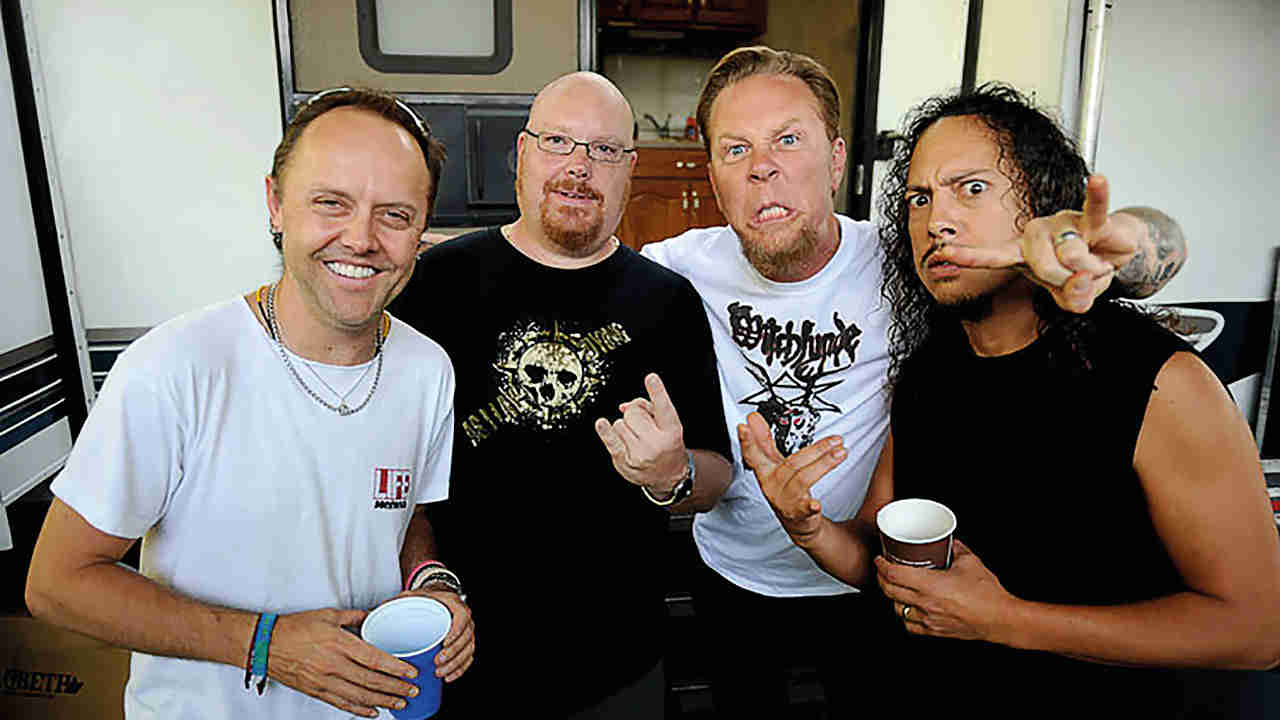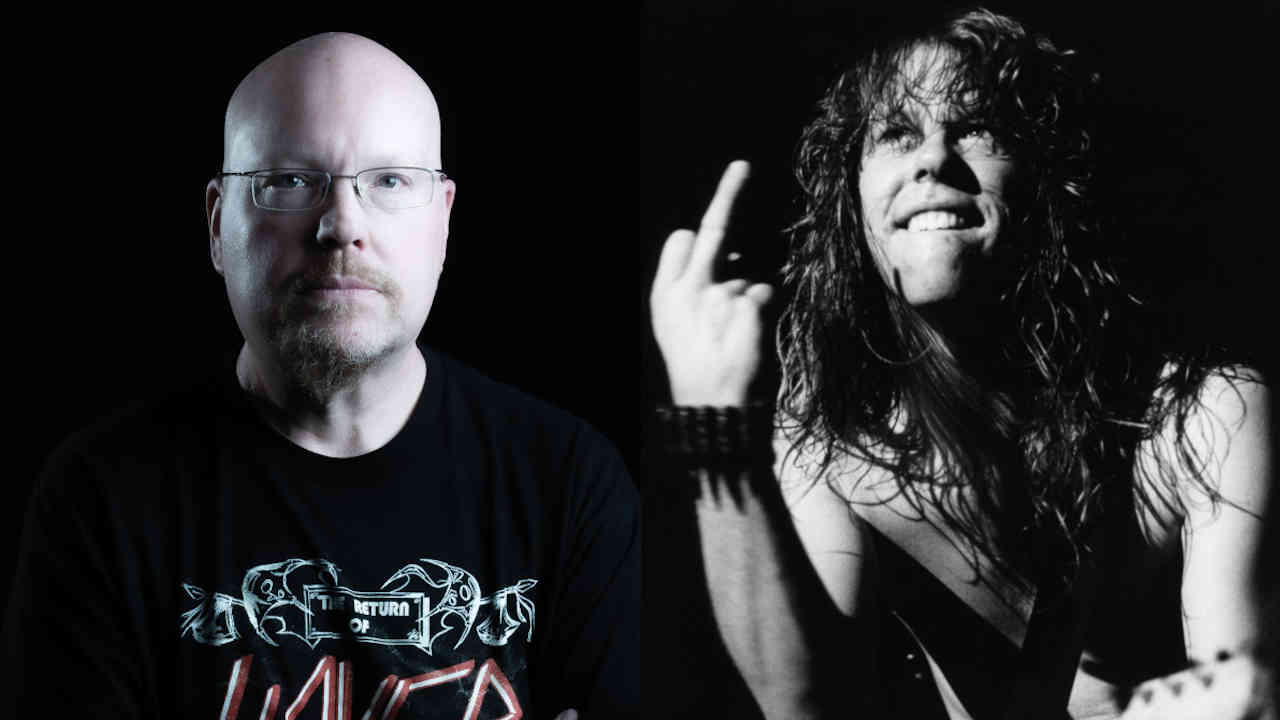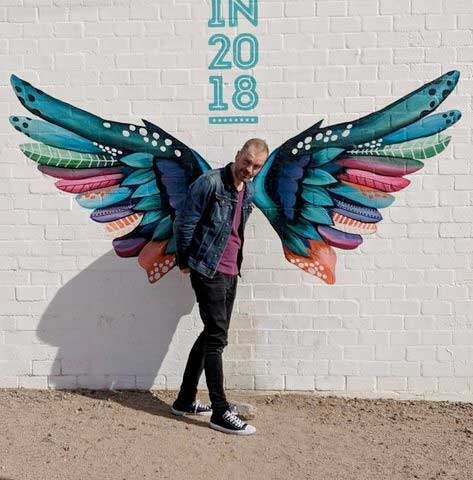If it wasn’t for Brian Slagel, the history of Metallica might have been dramatically different. In 1982, the fanzine writer turned fledgling record label owner gave the unknown band their first big break by including them on Metal Massacre, a compilation album that would launch his brand new label, Metal Blade. The track they contributed, Hit The Lights, was jammed on the end of the album and miscredited to ‘Mettallica’, but it provided the spark that fired up the career of both the band and Metal Blade – both of which are still going strong today. “For them and for me to still be doing this 40 years later is just mind-blowing,” says Brian, speaking to Hammer via Zoom from his home in Las Vegas.

Where does your history with Metallica begin?
“I got to know Lars through my friend John Kornarens, who had met him in the parking lot at a gig in 1980. Lars was wearing a Saxon t-shirt and nobody in LA apart from John and I knew who Saxon were. John told him, ‘You should meet my friend Brian.’ A couple of days later, Lars shows up at my house and we became fast friends.
This was before Metallica existed?
“Yeah, way earlier. I remember being at his house one day, and he had a drum set in the corner – not put together, just the pieces. He goes, ‘I’m gonna start a band.’ ‘Yeah, sure, Lars, whatever…’ Fast forward a little, and I’d discovered this scene in Los Angeles – there was no internet, so nobody knew this was happening. I got the idea to put together a compilation, Metal Massacre, as a way to get these bands out there. Then Lars called me up and said, ‘Hey, if I put together a band, can I be on your compilation album?’ And that, of course, ended up being Metallica.”
So he put Metallica together just to be on the compilation?
“As the story goes, he and James had jammed a bit, but they couldn’t really find anybody else to be in the band so nothing was happening. When the compilation came up, he called James and said, ‘Hey, we can be on this record.’ So they got together and reworked Hit The Lights, which James had from a previous band. The original recording was Lars, James playing guitar and bass, and Lloyd Grant, who was some guy they knew, playing lead. Lars literally brought the cassette tape to the studio on the final day we were mastering the album.”
Had you heard the track before they delivered it?
“I had not heard any of it. The quality wasn’t amazing, so I was surprised: ‘Well, it’s not bad at all.’ It’s funny, we had to bump the cassette tape up to a reel-to-reel, which cost 50 bucks. None of the band or me had the money. Luckily, my friend John had 50 bucks to do it, otherwise Metallica might not have been on the record, and who knows what would have happened then.”
When did you first see them play live?
“I missed their first show [at Radio City in Anaheim, Orange County, on March 14, 1982], but I went to the second show they ever did, which, crazily enough, was opening up for Saxon. That was the original line-up with Ron McGovney on bass and Dave Mustaine on guitar. But James wasn’t playing guitar at that point, only singing, and he was super-shy – Mustaine was the one talking to the crowd.”
What were your impressions of them as a live band?
“They were much better than I thought they were going to be. I wasn’t, like, ‘These are going to be the biggest band in the world at some point’, but they were pretty good. Their set consisted of Hit The Lights, maybe one other original, a cover of the song Blitzkrieg [by the NWOBHM band Blitzkrieg] and a bunch of Diamond Head covers. I remember the person who was doing the sound played a Diamond Head song and Lars runs up, freaking out, saying: ‘We gotta get this tape off! We’re playing this song later and we don’t want anybody to know that it’s not one of ours!’”
Where did Metallica fit in the LA scene?
“They didn’t fit in at all. All the promoters thought they were a punk band – they didn’t fit in with the Mötley Crües and the Ratts and that world. They played quite a bit in Orange County [south of Los Angeles], which was a bit more into the heavier stuff, but they really couldn’t find an audience in Los Angeles. I did this Metal Massacre show up in San Francisco and a band dropped out, so I asked Lars, ‘Hey, you guys wanna come up and play?, and he said, ‘Sure.’ I was aware of the scene up there, with bands like Exodus, but I was just floored when Metallica came out and there were 250 kids in jeans and jackets, going crazy. You never saw that in LA.”
How had those kids even heard about them?
“Tape trading. There were all these guys up in San Francisco, like Ron Quintana and Brian Lew – guys who are still around today – who were tape traders and got the word out. Ron had a fanzine and a radio show on the local university station, and he had played them on that. So these kids knew who the band were before they ever got there, which was crazy.”

Slayer were coming through at the same time. Was there a scene coalescing around the two bands?
“No, Metallica and Slayer were never very close. They were competitive. I was friends with both bands, and Metallica would ask me, ‘What are Slayer doing? What are they writing?’ And the Slayer guys would ask me, ‘What are Metallica doing?’ It was, ‘Who’s faster? Who’s heavier?’ They actually played together early on in Orange County. It was really early in Slayer’s career – it was probably only the second or third gig they had played. I’d forgotten about it until someone put a flyer online. I mean, what a gig to forget about! Ha ha ha!”
You also played a part in hooking them up with Cliff Burton. How did that happen?
“Cliff was in a band called Trauma from San Francisco, who were on Metal Massacre II. They came down to play a show at the Troubadour in Los Angeles and I went to see them. The band was OK, but the bass player was unbelievable – blue bell-bottom jeans, denim jacket, hair flowing, headbanging the whole gig. About a month later, Lars calls me and says, ‘Hey, we love Ron, but we want to get a better bass player. Do you know anybody?’ Trauma were coming back to LA in a couple of weeks, so I said, ‘You should see them – their bass player is incredible.’ So we go to the show, and within five or 10 minutes Lars says, ‘That guy is going to be in our band.’ Sure enough, a month or two later, Cliff’s in the band and they’re moving to San Francisco.
Was that original line-up really not built to last?
“Dave Mustaine was a phenomenal guitar player, but when he’d have too much to drink, he’d change a little bit. He wasn’t the fun-loving Dave that everybody knew. I could see where that could potentially be a problem, especially after seeing them and hanging out with them later on. It was really Lars and James’s band, but Mustaine was in there too – it was a three-headed monster in terms of who was running the show.”
The $64,000 question: why didn’t you sign them to Metal Blade?
“I just had no money. Lars came to me and said, ‘Hey we’ve got an opportunity to do a record for $10,000, do you want to do it?’ And I said, ‘Sure, but where am I going to get $10,000? I don’t even have $1,000.’ With the first Slayer album, Kerry [King]’s parents and Tom [Araya] financed it, but the Metallica guys just didn’t have enough money to get it done, and neither did I.”
Do you ever wonder how things would have turned out if you’d managed to scrape together that $10,000?
“Not really. Look, I’m happy I played my little role in their thing, and they’ve been unbelievably kind to me over the years talking about that. But I’ve had an unbelievable career anyway – I’ve worked with a million amazing bands, and I’m still doing it 40 years later. Money stuff, I don’t care about. I played my role in their story, and I don’t have any regrets. It all worked out the way it was supposed to for both of us.”
How are Lars and James different today to the kids you met 40-odd years ago?
“Lars hasn’t changed a whole lot. When we hang out, we revert back to being those teenage kids. James has definitely changed a lot – the first time I met him, he might have said three words, he was so shy. But as time’s gone on, he’s become a completely different guy – extremely intelligent, unbelievably friendly, always thanking me for the little part I played in Metallica history.”
All those years ago, did you ever think we’d still be talking about Metallica 40 years down the line?
“Never. No way in hell. I had a funny moment with Lars when they were inducted into the Rock & Roll Hall Of Fame [in 2009]. They had this big party, and it was in the wee hours and it had dwindled right down, and Lars and I were talking. And he looked at me and said, ‘Can you fucking believe this all happened?’ And it’s like, no, absolutely not, it’s just crazy.”

